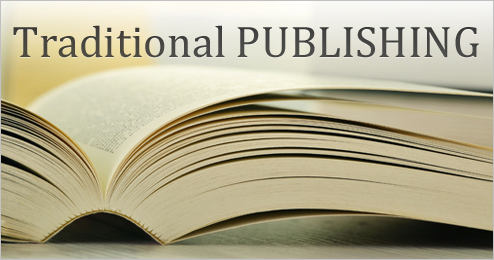Self-Publishing vs. Traditional Publishing
Approximately 60% of English-language books are produced through the “Big Five” traditional publishing houses. This means ALMOST HALF of all English-language books coming out are being published by indie houses or through self-publishing!
Many authors ask which direction we think they should go, and the answer lies in what your goals are for your book.
If you want to be published sooner, pick your editor, and retain full publishing and royalty rights to your book, online publishing may be the best way to go.
If you are looking for an advance on your royalties, a print run, and don’t mind it taking longer (6 months to 2 years) for it to be published and marketed, then traditional publishing is a potentially ideal option.
As an author, I wanted to do an upfront cost and keep my rights, and one of the cool things about self-publishing is I could have the book up for sale immediately and start to get feedback from real readers, and since I retain the publishing rights, I have the additional option of doing a print run at a later date. This was the best option FOR ME.
Everyone is different. Your book, your goals, your interests, your needs. This is a very small snapshot of the differences in types of publishing, and just a way to get you started thinking about the differences.
Here are some pros and cons to consider:

Self-Publishing
● PRO: You get immediate royalties from the sale of your book.
● PRO: You get a higher percentage of royalties than through traditional publishers (up to 70% royalty through self-publishing and only 6-25% royalty through trade publishers).
● PRO: You have much more control, including creative, over how your book cover is done, who your editor is, and how it is marketed.
● PRO: You set the price of your own book, both electronic and physical copies.
● PRO: You will be able to have your book published much faster than via trade publishers.
● PRO: You can make changes easily. If you notice typos or want to change your cover design, it is easy and quick to make those changes and have the revised book back on sale in just a couple of days.
● PRO: You will get paid your royalties monthly.
● CON: Self-publishing is an up-front cost out of pocket.
● CON: Marketing costs are also out of pocket, but you have significantly greater control over the marketing plans.
● CON: Self-publishing does not avail you of the abilities of having a large publisher name backing your book.
● CON: Potentially lower amount of sales than a trade publisher, partially due to less wide distribution.

Traditional Publishing
● PRO: You typically get an advance, which is money in your pocket.
● PRO: Trade publishers are experts and will know exactly what your book needs to be print ready.
● PRO: Trade publishers have editors they trust to work on your book.
● PRO: Trade publishers have wider distribution over self-publishing.
● PRO: There is a certain prestige and immediate credibility when using a well-known traditional publisher.
● CON: You will not get any royalties from sales of your book until your advance is fully paid back. And “paid back” is not total sales of the book – it is when you earn back your royalty (usually 6-25%) of sales of the book. For example, if you got an advance of $10,000 and you get a high royalty of 25%, then there must be $40,000 in book sales before you start receiving a royalty for each sale.
● CON: You have little to no control over who your editor is or how your book is marketed, and even the book cover and title can be changed according to the publisher’s whims.
● CON: Trade publishers have a much longer lead time and it can be months to years before your book is actually published and released for sale.
● CON: You may not know or have a personal relationship with your editor, and there have been stories of authors being unhappy with changes an editor has made.
● CON: Trade publishers receive hundreds to thousands of manuscripts per year and accept only a fraction of them.
● CON: Trade publishers typically only pay out royalties twice per year to the author.
● CON: Once you sign a publisher’s contract for your book, your book essentially belongs to the publisher, and it may belong to the publisher for the life of copyright, which is the life of the author plus 70 years after you die. You will no longer own the book, really.
● CON: Unless you make a best-seller list or go viral, you are unlikely to make a ton of money on your book. Average royalties from traditionally published book are approximately $1 per book sold.
So depending on the goals and timeline of your book, either option may be the right one for you. Have you had experience in either traditional or self-publishing? Let us know in the comments!
Tyler Wagner is the founder of Authors Unite where he helps people write, publish, and market their first profitable book. He has helped people create passive income, become leaders in their field, start businesses from their books, and much more. Since starting Authors Unite, he has helped 250+ people become profitable, bestselling authors. He is also the bestselling author of Conference Crushing, a book designed to help business people and entrepreneurs maximize their ROI at networking events, conventions and conferences.





